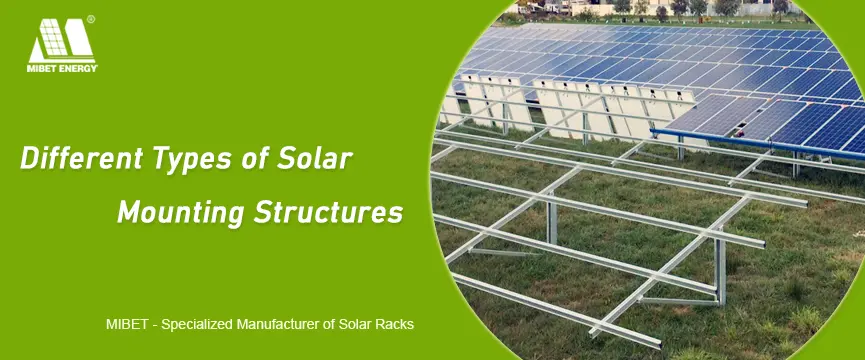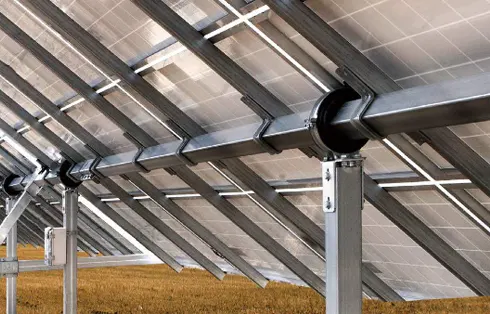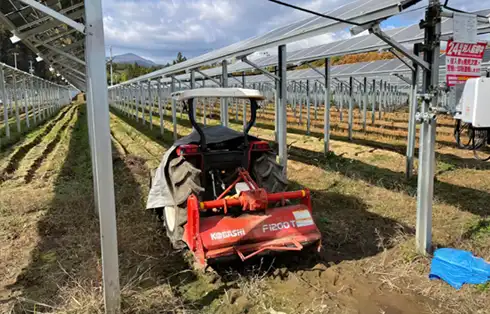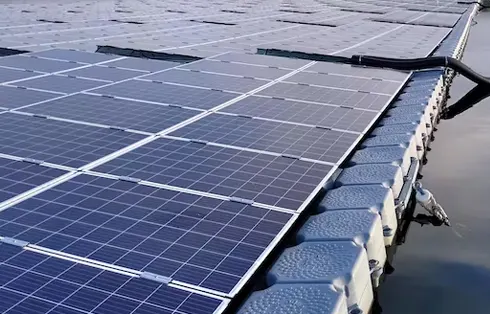- HOME
- ABOUT US
- SOLUTIONS
- Metal Roof PV Mounts and Systems
- Flat Roof Solar Panel Mounting Systems Solutions
- Tile Roof Solar Mounting Systems Solutions
- Solar Tracking Solutions for Commercial PV Projects
- Ground Solar Mounting Systems Solutions
- Floating Solar Solutions - PV Systems
- PV Solar Carport Mounting Systems Solutions
- Balcony Solar Panel Mounting Systems Solutions
- PRODUCTS
- PROJECTS
- COMPANY NEWS
- BLOG
- Contact Us

Solar panel mounting refers to the methods used to secure solar PV modules in place. There is a unique mounting system available if you need a solution for a pitched roof, flat roof, or ground. There are numerous solar mount options, but the three most common for commercial solar arrays are rooftop, ground mount, and floating system. In this blog, we will look at the various types of solar panel mounting systems available, with the goal of assisting you in finding the best solar mounting system for your solar project.
Solar Rooftop Mounting Structure
Empty rooftop space is an ideal location for solar panel installation, and large commercial buildings and distribution centers typically have an abundance of it. When evaluating rooftop solar, it is essential to consider the age of the existing roof, geographical latitude, weather conditions, roof pitch, and shading from neighboring vegetation or buildings.
Standing Seam Metal Roof
There are numerous methods for installing solar systems on metal roofs, the specifics of which can affect installation costs and life expectancy. Solar panel mounts for metal roofs are made up of two basic components: roof mounting clamps and solar panel attachments. Depending on the circumstances and your personal preferences, you can install with or without rails.
With a standing-seam metal roof, an entire solar panel system can be installed without any penetrations, significantly lowering mounting and labor costs. Tens of thousands of attachment points can be found on a solar panel roof. A non-penetrating attachment system with a standing-seam clamp will quickly and easily attach the solar modules without voiding the metal roof warranty or causing leakage.

Corrugated & Trapezoidal Sheet Metal Roof
Setting up PV systems on corrugated and trapezoidal roofing provides a secure and reliable attachment for the panels, guarantees the roof membrane's optimal protection, flexible arrangement possibilities, and maximum cost-effectiveness.

The aluminum clamp series and L-feet hanger bolt are suitable for corrugated and trapezoidal metal sheet roofs. The aluminum clamps have an extremely wide clamping area, allowing for the quick and direct attachment of the rails to the raised seams using metal sheet screws.

Hanger Bolt applies to install on both wooden rafters and steel purlin. The hanger bolt typically has a threaded end that allows the attachment of an L-feet, which provides a secure, adjustable platform for the solar panel mounting rails. This design ensures a firm hold while also offering adjustability for optimal solar panel orientation and angle.

Tile Roof
When installing solar on a pitched shingle roof, special flashing attachments are typically used to mechanically attach the solar array to the roof structure beneath the shingles. Solar modules are typically mounted flush with the slope of the existing shingle roof. Tiled roof hooks brackets can be put on most types of roofs, such as pantile roofs, concrete/flat tile roofs, and asphalt shingle roofs.
Metal hooks are drilled directly into the roof rafters when installing an on-roof solar system. This may necessitate the removal and replacement of some roof tiles. Your solar PV panels are attached to hooks by means of vertical rails. Finally, for maximum protection, a weatherproof seal is applied around the hooks.

Flat Roof
Flat roof solar refers to the installation of solar panels on a nearly level roof with a pitch ranging from 1 to 15 degrees. When it comes to flat roof solutions, the most important consideration is usually how much weight the roof can support. The weight of ballasted and non-penetrating systems is distributed across the roof. To keep the arrays on the roof, weight-based loading is used.
A ballasted racking system is commonly used on flat roofs with a slope of less than 7 degrees. This ballasted roof mount system typically does not require roof penetrations and adds 3-7 PSF of weight to the roof. Mechanical attachments can be used in areas where the roof cannot structurally support the additional weight. Solar modules are typically installed with a pitch of 5, 10, and 15 degrees in this type of system.

Ground Mounted Solar Structure
If your roof is unsuitable for solar PV and you have available land, ground mounted solar is a great option. Because you may have more land than roof space in some cases, choosing ground mounted solar panels allows you to generate more solar energy. For those looking to go completely off-grid, ground mounted solar panels are usually a great mounting solution.
Fixed Tilt Bracket
Ground-mounted solar fixed tilt systems are commonly used for large projects and are available in single-post or dual-post configurations. A fixed tilt system, particularly for large facilities, results in significant cost savings in terms of assembly time due to a smaller number of posts that must be placed. Different frame variants for various module arrangements also ensure a cost-effective selection of materials optimized to the desired configuration.

Solar Trackers
Solar trackers are an important tool for increasing the efficiency of energy conversion in solar PV systems. They aid in narrowing the angle of incidence and capturing more energy by optimizing the orientation of the solar panels throughout the day.
In general, a single-axis solar tracker installed on a solar panel system improves performance by 25% to 35%, while a dual-axis tracker improves performance by another 5% to 10%. They are not commonly used in residential solar projects, but they do have a place in the utility-scale and commercial/industrial solar markets.

Solar Carport
Solar carports are solar panels that are mounted above parking spaces and provide a flexible and cost-effective way to install solar power because they do not take up any additional space. Carport mounting systems are ideal for commercial and industrial parking lots with one or two rows of parking. EV charging stations can also be installed.
Many solar canopies have built-in charging ports so that electric car owners can recharge their batteries while their cars are parked. Solar canopies frequently bring education and awareness of solar energy to the public due to their visibility and user-friendly parking experiences.

Agriculture Solar Mounting
This represents a cost-effective and sustainable energy solution for farms and agriculture. The farmland mounting system allows land originally used for agricultural production to gain additional benefits from solar power generation. The height of the PV modules can be adjusted according to different crops. The row spacing and system height can be customized to meet the specific requirements of particular crops.

Floating Solar Mounting Structure
A floating photovoltaic (FPV) solution for tilted solar PV panels on water. Fishery production and PV power generation combined, with dual use in one location. This system is floated on your dam, river, or lake to reduce evaporation and keep your solar panels cool for maximum efficiency.
The floating solar mounting system can significantly save land resources while having little impact on the aquatic environment. The new green material could withstand changes in the natural environment as well as low temperatures.

Giles Exley, Author provided
What Do I Need To Know Before Installing Solar Mounting Systems?
There are a few factors to consider before deciding on the best solar mounting system for your property. First, consider whether you have enough rooftop space, land, or suitable property for a floating system. Along with this, you should think about:
● The magnitude of the solar panel array
● Your financial plan
● The material that works for you (steel, aluminum, polymer, plastic)
● Local climate
● City regulations
Mibet specializes in high-quality, easy-to-install mounting systems. When deciding whether to install solar, keep the systems listed above in mind and select the one that works best for you and your project.

